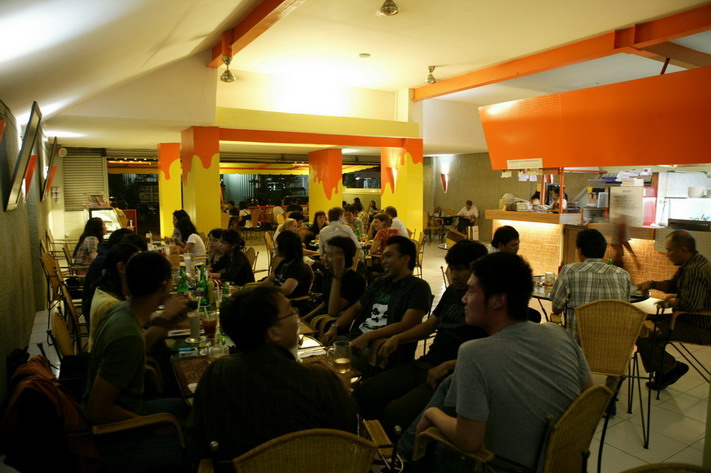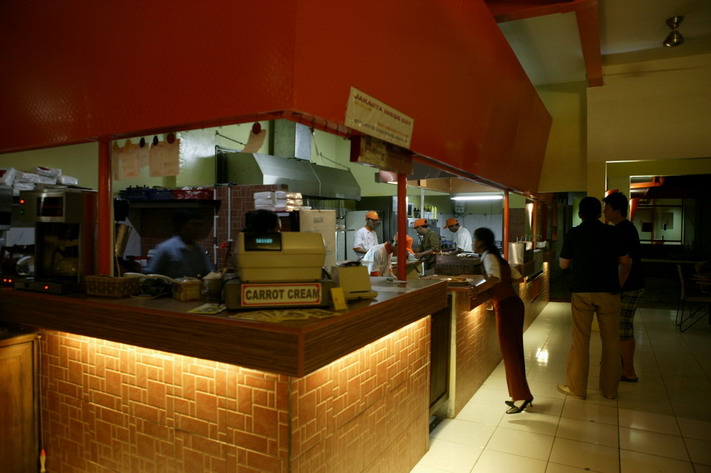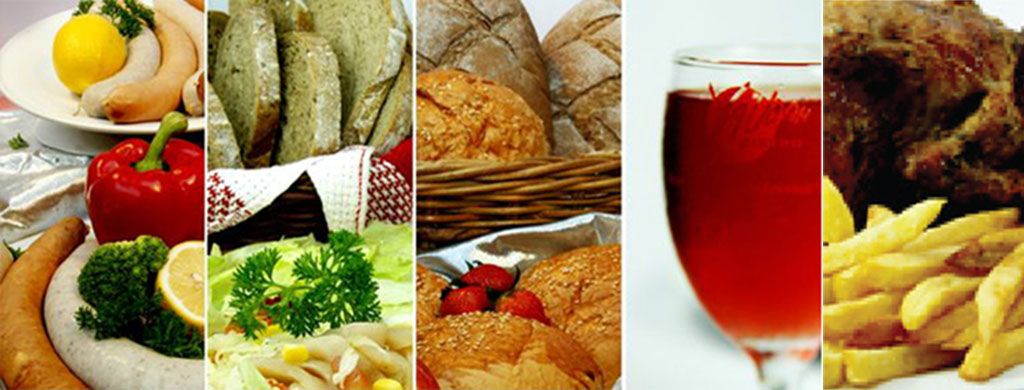Not Simply Grabbed – You’re Getting Squeezed
Ah for the good old days – come in, plunk down, yell for the waiter or waitress and then magically dive in to your steaming food and freezing drink.

Here is a memento of a bygone era – everybody having a great time wining’n’dining at Ya Udah Bistro.
EATING WELL IN AN AGE OF LOCKDOWN
WHO COULD HAVE IMAGINED, even a bare six months ago, that every restaurant patron in big Indonesian cities would be forced to hide out at home? Well here we are, clobbered hard by a pandemic, right around the planet, even in Indonesia – where the Government ‘promised’ we would be immune to the virus. They just didn’t see it coming:

COVID-19 means LOCKDOWN for retail – and that includes F&B joints like your favorite family dining destination Ya Udah Bistro. It’s a panic for retail businesses at the moment, but not for everybody: delivery services are smiling on the way to the bank:

As cities across the archipelago get locked down on account of Covid-19, the food delivery business via GoFood or Grab Food is getting quite peppy, serving the stay-at-home millions. Now you may well wonder …
WHO IS REALLY PROFITING FROM FOOD DELIVERY?
Spoiler: not the various café, restaurant and fast food trade – not when Grab Food takes 20% from the top – i.e., the price plus 10% Government of Indonesia ‘Resto Tax’. Nor the customer, waiting hungrily at home: he or she is also getting stung in the purse: Grab allows merchants to jack up their standard Menu pricing by up to 25% for home delivery by motorcycle. What eateries like YaUdah Bistro fear of course is that the consequent ‘sticker shock’ will dissuade patrons from ordering on-line very frequently.
An eatery can thus only survive if it quickly develops fast, secure, economical delivery / takeout (takeaway) mechanisms. We’re not just talking about Indonesia, where ‘special services’ often stick you for higher prices.
It’s as bad or worse around the world. Look at the mess North America is in, as legacy restaurant patrons are ordered to stay at home. Clearly, the business has to go to the delivery services – and it’s big business:
Delivery has become a $100 billion industry “… and it’s still growing. If an F&B establishment is not in on this trend yet, it’s missing out on thousands of people who want to enjoy restaurant-quality food – while stuck in their own homes. Research is necessary to discover the best way to hit the road with hot food and cold drink.
One of the biggest delivery services in the USA is Grubhub. F&B businesses are grumbling about their borderline ethics and steep prices, such as including F&B businesses without any partnership agreement on their website. They do this while admitting it is unethical and a bad business move:
My wife placed an order on Grubhub (NYSE:GRUB) from a local Italian restaurant. When it arrived, a piece of it was wrong (we received the spaghetti Bolognese entree instead of the polenta Bolognese appetizer) and we were charged for the pricier item as well as a mysterious tip on top of the 15% we had already added.
Since we’re living through a pandemic and mistakes happen, we called the restaurant and explained the mix-up. It offered to make the correct appetizer for us and I grabbed my mask to drive down to pick it up.
When I arrived at the restaurant, the workers were nice but they let me know something that I found quite surprising. This eatery was not an actual Grubhub partner. It was listed on the site without its knowledge or cooperation.

Apparently, this is common
Grubhub had listed this particular restaurant without partnering with it. When my wife placed our order online, the person picking it up for the delivery service literally called in the order (making a mistake) and charged it on a company card (adding the above-mentioned extra tip).
The online delivery service acknowledged that the industry was taking up the practice of adding restaurants that are not partners in an October 2019 shareholder letter.
“Listing restaurants on platforms without any partnership allowed other players to expand restaurant inventory rapidly,” CEO Matt Maloney wrote.
The problem is that not having an actual partnership creates issues for Grubhub and its partners. That’s also something that the company acknowledges.
“For restaurant inventory, we will rapidly expand our recent pilots of putting non-partnered restaurants on the platform,” Maloney wrote. “For reasons we’ve discussed many times, we believe non-partnered options are the wrong long-term answer for diners, restaurants, and shareholders.”
Basically, because other companies are using this strategy, Grubhub feels it has to do the same or fall behind. That sort of makes sense, except the company does not share in its app when you’re ordering from a partner — rivals including Uber Technologies‘ (NYSE:UBER) Uber Eats and DoorDash are doing that as well — despite admitting that the experience is poor:
It is expensive for everyone, a suboptimal diner experience and rife with operational challenges. With that said, it is extremely efficient and cheap to add non-partnered inventory to our platform and it can at least ensure that all of our current and potential new diners have the option to order from any of their favorite restaurants now, even if it’s not the best solution. By leveraging non-partnered options, we believe we can more than double the number of restaurants on our platform by the end of 2020.
Hey, we know this stinks for consumers and restaurants but it may be good for us in the long term so we’re doing it anyway. Basically, Grubhub believes it can add customers and eventually force restaurants to partner with it if it does something that it knows nobody likes.
A customer service nightmare
After a long phone call, Grubhub refunded us for the pricey entree we did not want. The restaurant explained to me that the delivery service had used an old menu that actually contains items that it no longer sells (due to supply chain issues) and claimed that it had marked up prices (I did not verify that).
This practice would be fine if Grubhub made it clear when it was providing delivery from a non-partner. A local delivery service does just that and it explicitly charges 15% extra to pick up at eateries where it’s not a partner — and it communicates with the customer if the menu has changed or if prices have gone up.
It’s not what Grubhub (and rivals including Uber Eats) is doing that’s wrong. Instead, it’s the lack of transparency. If you want to make a bad experience better, then be honest. Not doing so leads to anger from your existing customers and your potential partners.
Grubhub is taking heat for its gouging, as a matter of fact.

Whichever way you look at it, the customer and the F&B outlet are both getting screwed, big-time. Does this mean that the many start-up delivery companies are turning huge profits, from their inescapable service?
Not at all.
The funny thing is that most of these ‘unicorns’ charging hefty fees are not only not turning a profit – they are burning through their capital like wildfire, bleeding cash heavily while fighting for market share – like the situation with Doordash:

‘…DoorDash lost $450 million generating $900 million in revenue last year, which is wild. The delivery business was working just fine before DoorDash and co. swept in with piles of money to burn. Today, as Roy writes astutely, the model is broken. “You have insanely large pools of capital creating an incredibly inefficient money-losing business model,” he writes. “It’s used to subsidize an untenable customer expectation. You leverage a broken workforce to minimize your genuine labor expenses. The companies unload their capital cannons on customer acquisition, while this week’s Uber-Grubhub news reminds us, the only viable endgame is a promise of monopoly concentration and increased prices. But is that even viable?”’
Cut Out the Middle-Man Maybe Dear Patrons??
Wow, listen to this:
When Pitas and Sticks, a Greek restaurant in Brooklyn, New York, gets an order from Grubhub, owner John Stamos gives each bag a personal touch, printing out a small note with a simple message: Grubhub orders are killing his business.
“Small businesses like us need your support in this time of crisis,” Stamos writes in each note. “Online apps such as GRUBHUB ARE CHARGING US 30% of each order and $9 or more on orders made using phone numbers on their app or website … please help save the restaurant industry by ordering directly with us.”

Meanwhile… back at the Bistro, we are working our fingers to the bone, going full-blast, full-bore to keep our business alive with first-class, hygienic, rapid Takeaway service. You, dear patron, are alas temporarily banned from entering the premises. You can, however, save money by picking up your order at the door, after phoning it in or ordering by e-mail. Just give us time to jump on our pony, head out to the corral, run down a bawling animal, slaughter it, dress the meat, carve it up, pass it to the cook and roast it real n.i.c.e. & s.l.o.w…
Like an hour or so: order at 16:45, pick it up at the door at 17:45. Or have it delivered and pay the extra. It’s up to you: we truly value your business and look forward to a time, post-COVID-19 pandemic, when we can host you and your pals, business partners, old lady, screaming brats, potential clients, mortal enemies or whoever, in person, on our premises in Menteng and Serpong.



